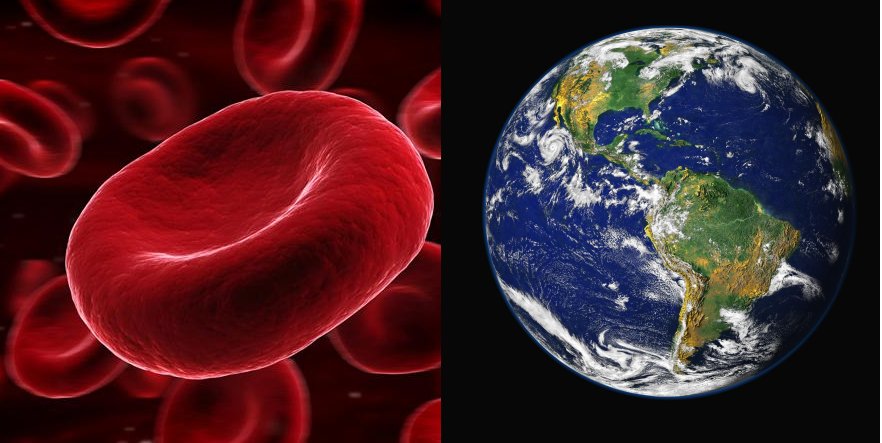MessageToEagle.com – There are certain blood types that are very rare on Earth. People who have a unique blood type can be found in all corners of the world. Are you perhaps one them?
What are the rarest blood types on Earth? To answer this question, we must first understand that a blood type is classified as rare if fewer than 1 in 1,000 people have it. There are currently 33 recognized blood group systems and many are still undiscovered. Some of these blood groups are extremely rare, making people have this blood truly unique.
What Determines A Human’s Blood Type?
There are 8 basic blood types and these are A, AB, B, and O and their positive or negative variations. These 8 types can be divided into millions of varieties and this fact makes blood research really complicated.
The classifications are derived from the antigens of a person’s blood cells – antigens being proteins that are found on the surface of the cells and which are designed to combat bacteria and viruses. If a particular high-prevalence antigen is missing from your red blood cells, then you are “negative” for that blood group.
The most common of these blood type is O. The origin of our blood types still remains a great scientific riddle.
According to the American Red Cross the most rare blood type is AB(-). It is present in 1% of the Caucasians, in African Americans it is even rarer. B(-) and O(-) are also very rare, each accounting for less than 5% of the world’s population.
There are also other blood types that are very rare and few people have heard about them.
Bombay Blood Group – One Of The World’s Rarest Blood Groups
A blood type few have heard of is called Bombay blood group. It is one of the world’s rarest blood groups and people who carry this rare blood type can accept blood only from another Bombay blood type individual, and not from anyone who is O, A, B or AB type.
It is estimated that about 1 in 10, 000 Indians and 1 per 1,000,000 individuals in Europe.
The h/h blood group, also known as Oh or the Bombay blood group was discovered in 1952 in Bombay, India by Dr.Y.M.Bhende.
Two patients needed blood transfusion, but none of the blood types known until then worked for them. The moment their blood samples were mixed with any of the above types, the blood coagulated or clumped up.
The Bombay (Oh) phenotype is characterized by the absence of A, B, and H antigens on red cells.
Rh-Null – Golden Blood – A “Universal Blood”
What makes Rh-null very rare and special is that it lacks any antigens in the Rh system. There are only 9 active donors in the community of rare blood donors that have Rh-null blood. This means that people who have Rh-null can have difficulties obtaining lifesaving blood.
See also:
Is Rh Negative Blood Type Of Extraterrestrial Origin?
Network Of Miles-Long Blood Vessels In Human Body
Bombay Blood Is One Of The World’s Rarest Blood Groups
Can Blood Type Determine Your Personality? Check And See If True
Rh-null was first described in 1961 in an Aboriginal Australian woman. At the time doctors were rather surprised because it was assumed an embryo missing all Rh blood-cell antigens would not survive, let alone grow into a normal, thriving adult. By 2010, about 43 people with Rh-null blood had been reported worldwide. Rh-null is often called golden blood and it’s the world’s oldest blood type.
The Lu(a-b-) phenotype or Lunull – Extremely Rare Blood Group
The Lutheran blood group was initially described in 1945. It got its name because of a misinterpretation of the patient’s name, Luteran.
The Lu(a−b−) phenotype is extremely uncommon and is known to have three genetic backgrounds. Tests on 250000 blood donors show the frequency of Lu(a-b-) to be approximately 1 in 3000. So, this blood type is very rare!
Rh Negative – One Of The Most Unexplained Blood Types
Rh negative is not rare, but nevertheless a real scientific mystery. No one has been able to explain where people with the Rh negative blood type people came from. Most, familiar with blood factors, admit that these people must be the result of a random mutation, if not descendants of a different ancestor. What cause the mutation? Who was this unknown ancestor?
There is some evidence that suggests the RH-negative blood group may have appeared about 35,000 years ago. Appearance of RH-negative blood did not follow the usual evolutionary path. In fact, evolution would seem to be ruled out as a possible cause of the anomaly. It has been proven that blood is the least likely to mutate. There are no other blood mutations. The introduction of the RH-negative blood type was not a naturally occurring part of human evolution.
The blood type is not rare, but it still poses a great scientific mystery.
Copyright © MessageToEagle.com. All rights reserved. This material may not be published, broadcast, rewritten or redistributed in whole or part without the express written permission of MessageToEagle.com
Expand for references
